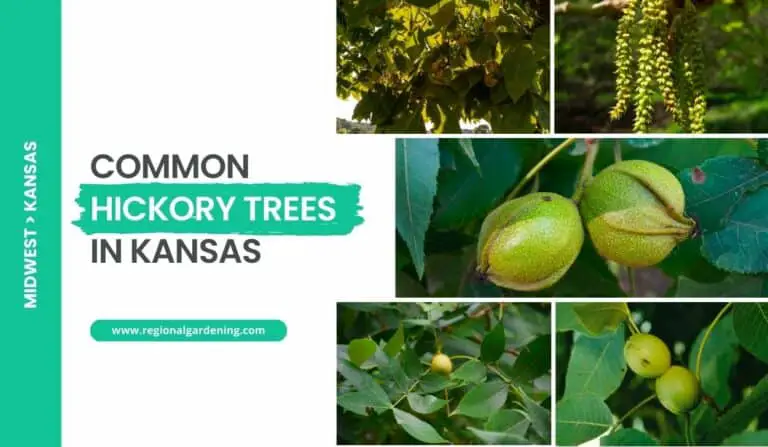Common Willow Trees In Michigan (4 Types To Know)
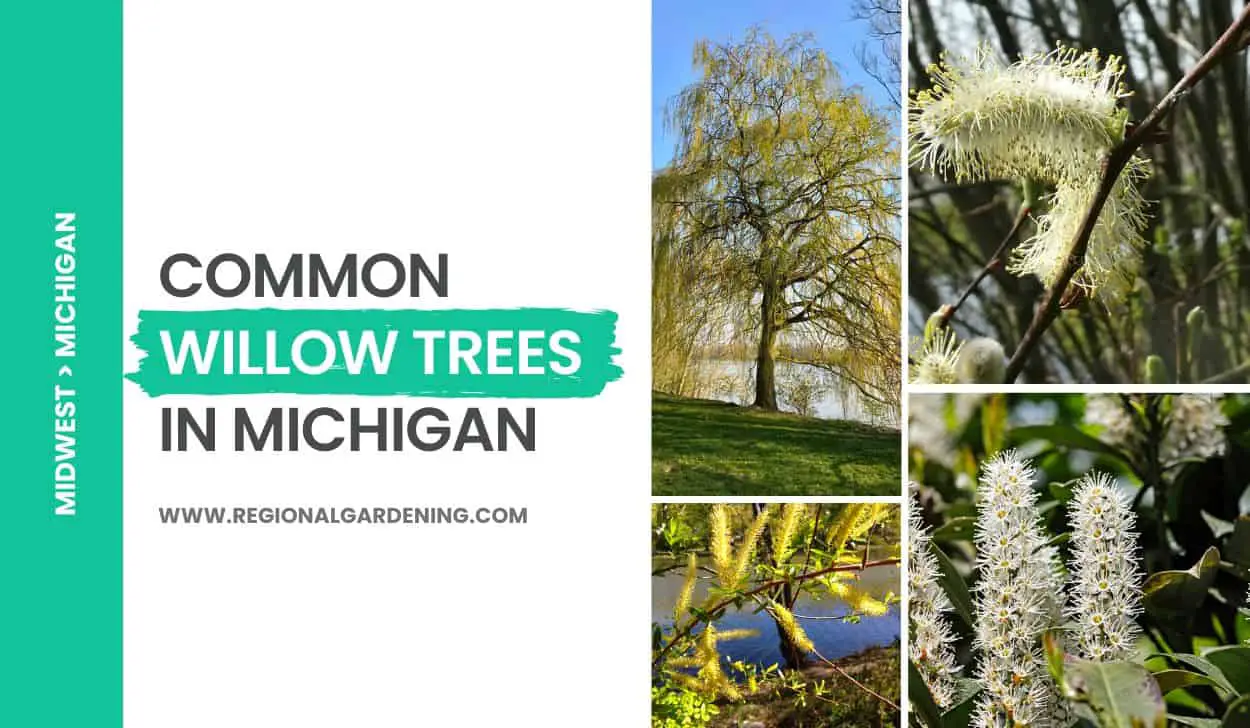
Willow trees are a common sight in Michigan, often used to enhance the aesthetic value of public spaces like parks and gardens. But did you know that four major types of willow trees can be found throughout the state of Michigan?
In this article, we’ll take a closer look at the willow trees in Michigan and provide pictures and identification tips to help you distinguish them from one another.
Knowing how to identify different types of willow trees can be important for several reasons. For one, it can help you appreciate the diversity of Michigan’s flora and fauna.
Additionally, if you’re a gardener or landscaper, being able to recognize different types of willow trees can help you make informed decisions about which plants to include in your designs.
Finally, if you’re concerned about the environmental impact of non-native species, being able to identify different types of willow trees can help you avoid planting invasive varieties in your yard or garden.
So, let’s go through the complete details of common willow trees in Michigan.
1. Laurel Willow
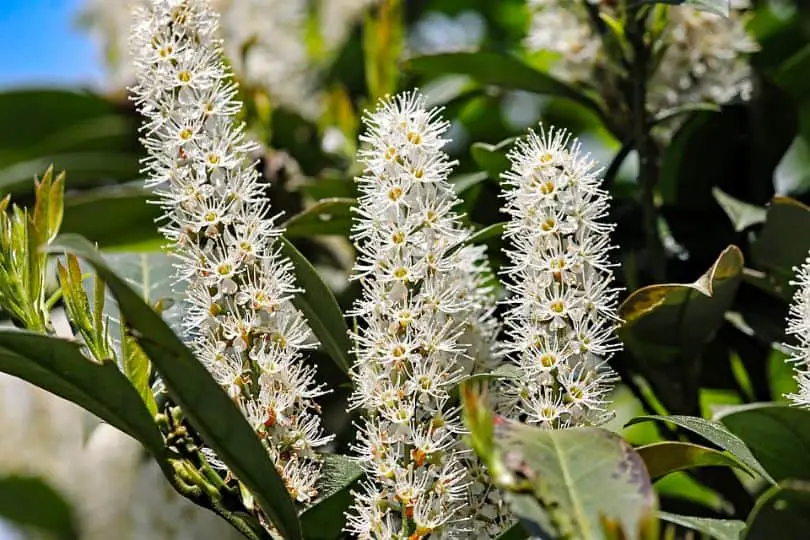
- Common Name: Laurel Willow, Bay-leaved Willow
- Scientific Name: Salix pentandra
- Mature Height: 25 – 45 ft (7.5–14 m)
- Flowers: Catkin
- Uses: Light furniture, baskets, etc.
The Laurel Willow, also called the Bay-leaved Willow, is a fast-growing but short-lived tree. It has a multi-stemmed trunk and an asymmetrical, rounded crown that gives it the appearance of a large shrub.
The lance-shaped, straightforward leaves range in length from two to five inches. They are alternately attached to the stem and have a pointed tip with a fine-toothed margin. The leaves have a shiny dark green top and a dull green bottom. When crushed, they have a distinct yellow midrib and a pleasant fragrance.
When young, the bark of the Laurel Willow is gray and smooth, but it cracks into flat, irregular ridges as it ages. The tree produces golden yellow catkins that are 1-2 inches long and grow on a short stalk. In the fall, the leaves turn yellow.
The Laurel Willow is not native to Michigan, but it was introduced from Europe and western Asia. It usually lives for 20-40 years and likes to grow in acidic soils. It can be found throughout Michigan, but it is more concentrated in and around cities and parks.
Because it is a relatively disease-free species, it is also commonly planted in yards, parks, and along roads in shelterbelts. The tree can also thrive well north into Canada.
The leaves of the Laurel Willow have been used to flavor foods, and they often remain on the tree until autumn. This species has one of the wider leaves of the willow species and is one of the most common and successful willow trees in Michigan.
2. Pussy Willow
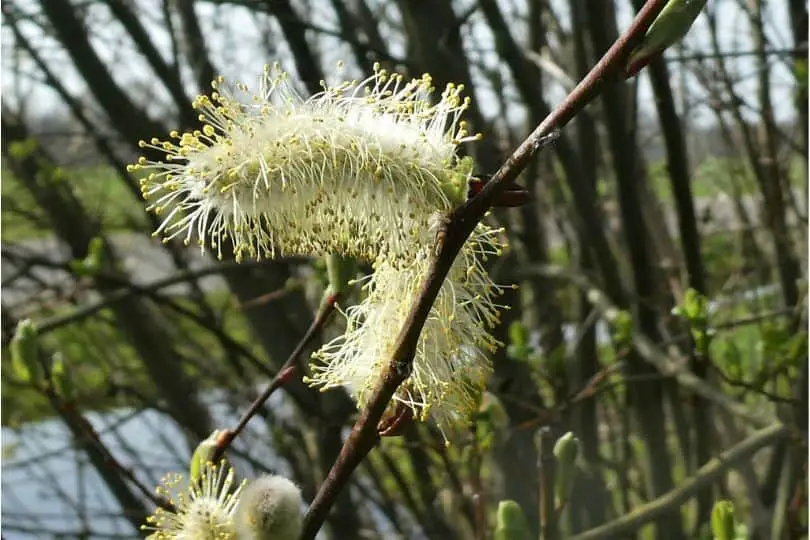
- Common Name: Pussy Willow
- Scientific Name: Salix discolor
- Mature Height: 10-20ft (3-6m)
- Flowers: Catkin
- Uses: Weaving into baskets, wickerwork furniture, and even coffins.
The Pussy Willow is a tiny tree that can reach a height of 10-20 feet. It has several trunks and a wavy crown.
The Pussy Willow tree’s leaves are simple, lance-shaped, and 2-5 inches long. The leaves are alternately connected and have shallow, uneven teeth. The leaves are soft to the touch, glossy green above and paler below. Young leaves are frequently reddish and hairy. The leafstalk also has two tiny appendages (stipules).
The Pussy Willow tree’s bark is gray to brown with crimson tinges and shallow furrows. While young, the tree’s catkins are 12-1 inch long and covered with silky hairs. There is no stalk on the catkins.
The Pussy Willow tree’s fruit is catkin-like, 14 inches long, and consists of several capsules with seeds within. The Pussy Willow tree’s fall color is yellow. This is one of the native willow trees in Michigan and has a lifespan of 20 to 50 years.
It can be found in moist soils, near shorelines, marshes, and wetlands. It is well-known for its young catkins, which are covered in silky hairs known as pussy fur and are frequently harvested and used in floral arrangements in the early spring. The tree’s twigs are reddish-purple with orange spots (lenticels).
The discolor in the species’ name alludes to the pale undersides of the leaves. Look for tiny leaf-like stipules on the leafstalk, as well as the contrasting green top and pale lower leaf surfaces, to identify the Pussy Willow tree.
3. Black Willow

- Common Name: Black Willow
- Scientific Name: Salix nigra
- Mature Height: 40-60ft (12-18m)
- Flowers: Catkin
- Uses: Weaving baskets, furniture, coffins, etc
Another species of commonly seen willow trees in Michigan, the Black Willow is a medium-sized tree that can reach heights of 40-60 feet. It features a small, uneven crown and a forked trunk.
The leaves of the tree are simple, long, narrow, and lance-shaped, with a fine-toothed edge. The leaves are linked to the stem alternately and are a bright green color both above and below. The leaf stalks are thin and often have small leaf-like parts (stipules) that make the leaf look like it’s holding onto the twig.
The bark of the tree is dark brown and heavily furrowed, with huge scattered scales and flat-topped ridges. It features catkin flowers that are about 2-3 inches long and hangs down. Its fruit is catkin-like and about 2-3 inches long, with several capsules containing seeds inside. The leaves turn a light yellow tint in the fall.
The Black Willow is a Michigan native tree that can live for 50-75 years. It loves damp soils, such as those along stream banks or wetlands, and is shade-intolerant. This tree, sometimes known as the Swamp Willow, is the largest of Michigan’s native willows.
The tree grows quickly but also dies quickly, and strong winds can easily break its branches. It can also hybridize with the Crack Willow, a willow species that are more abundant in southern states than in Michigan.
When young, the twigs of the Black Willow are yellow to reddish and downy, but as they age, they turn gray and hairless. To recognize this tree, look for its enormous leaves and leaf-like stipules.
4. Weeping Willow
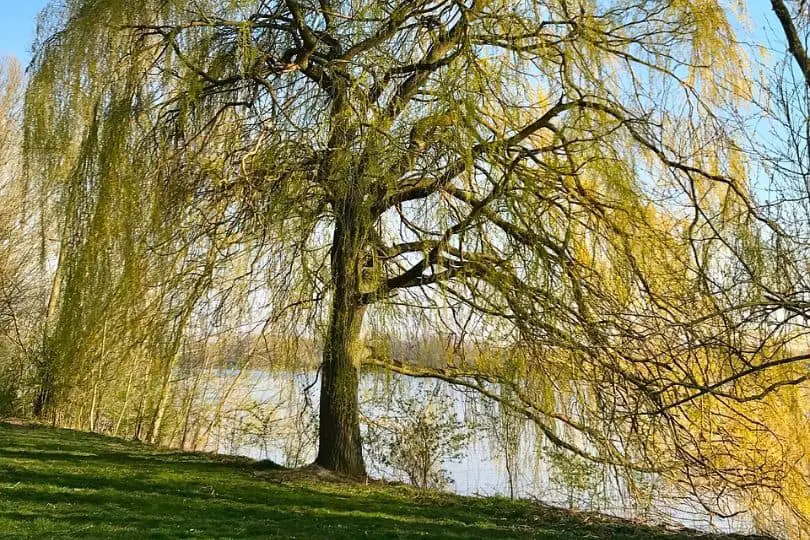
- Common Name: Weeping Willow, Babylon Weeping Willow
- Scientific Name: Salix babylonica
- Mature Height: 40-80ft (12-25m)
- Flowers: Erect catkin
- Uses: Baskets, wickerwork furniture, coffins, etc
Weeping willows are one of the most commonly found non-native willow trees in Michigan. It can grow to be 40-80 feet tall with a single trunk that is frequently twisted. The tree has many drooping branches that reach the ground frequently, giving it a broad and spherical form.
The tree’s leaves are simple and narrow, with a pointed apex and a finely serrated edge. They are brilliant green on top and yellowish on the bottom. The tree’s bark is light brown with many medium furrows and flat-topped corky ridges.
The tree produces catkin flowers that are 1 inch long and stand erect on a short leafy stalk in the spring. The tree’s leaves turn yellow in the autumn.
The Weeping Willow tree was introduced to the US from China. It can live up to 75-100 years which is longer than any other willow tree in Michigan. It grows best in wet or moist soils and is frequently observed along the shores of ponds and lakes.
Because of its yellow twigs and fall color, the Weeping Willow tree is also known as the Golden Willow. Its twigs are extremely flexible and hang almost to the ground. Yet, in high gusts, several branches can break off. It used to be a popular tree to plant in yards and parks, but it is no longer as popular. Willow bark extract (salicin) was utilized as an early version of aspirin.
Willow Trees In Michigan – Frequently Asked Questions (FAQs)
Let’s look at some of the most frequently asked questions related to commonly seen willow trees in Michigan. These questions are sourced from gardening forums and online threads.
What are some uses of willow trees in Michigan?
Willow trees have a wide range of applications, both practical and decorative. Some willow species have flexible, long-lasting branches that can be used for basketry, furniture making, and other crafts. Willow trees are also commonly planted for erosion control and streambank stabilization because their deep roots help hold soil in place. Finally, willow trees are prized for their graceful, weeping growth habit and are frequently used as ornamental trees in landscaping projects.
Are willow trees common in Michigan?
Four types of willow trees are very common in Michigan forests. These trees are Pussy Willow, Black Willow, Weeping Willow, and Laural Willow. Among them, Pussy and Black willows are native to the state.
Similar Articles
- Native Birch Trees In Michigan
- Native Elm Trees In Michigan
- Common Nut Trees In Michigan
- Common White Bark Trees In Michigan
- Common Ash Trees In Michigan
- Common Spruce Trees In Michigan
- Common Red Flowering Trees In Michigan
- Common Maple Trees In Michigan
- Common Purple Trees In Michigan
- Yellow Flowering Trees In Michigan
- White Flowering Trees In Michigan
- Common Hickory Trees In Michigan
- Common Oak Trees In Michigan
Sources
The Regional Gardening team makes sure that the information in our articles is accurate by only using sources that are known to be trustworthy. Some of these sources are peer-reviewed journals from government agencies, well-known universities, and scientific research organizations.
- Book – Michigan Trees A Guide to the Trees of the Great Lakes Region
- Book – Field Manual of Michigan Flora
- Book – Trees Of Michigan Field Guide
- Michigan’s Forests, Department of Natural Resources
- Michigan Botanical Society
- LSA Herbarium, University Of Michigan
- Department Of Forestry, Michigan State University
- Michigan Nature Association





